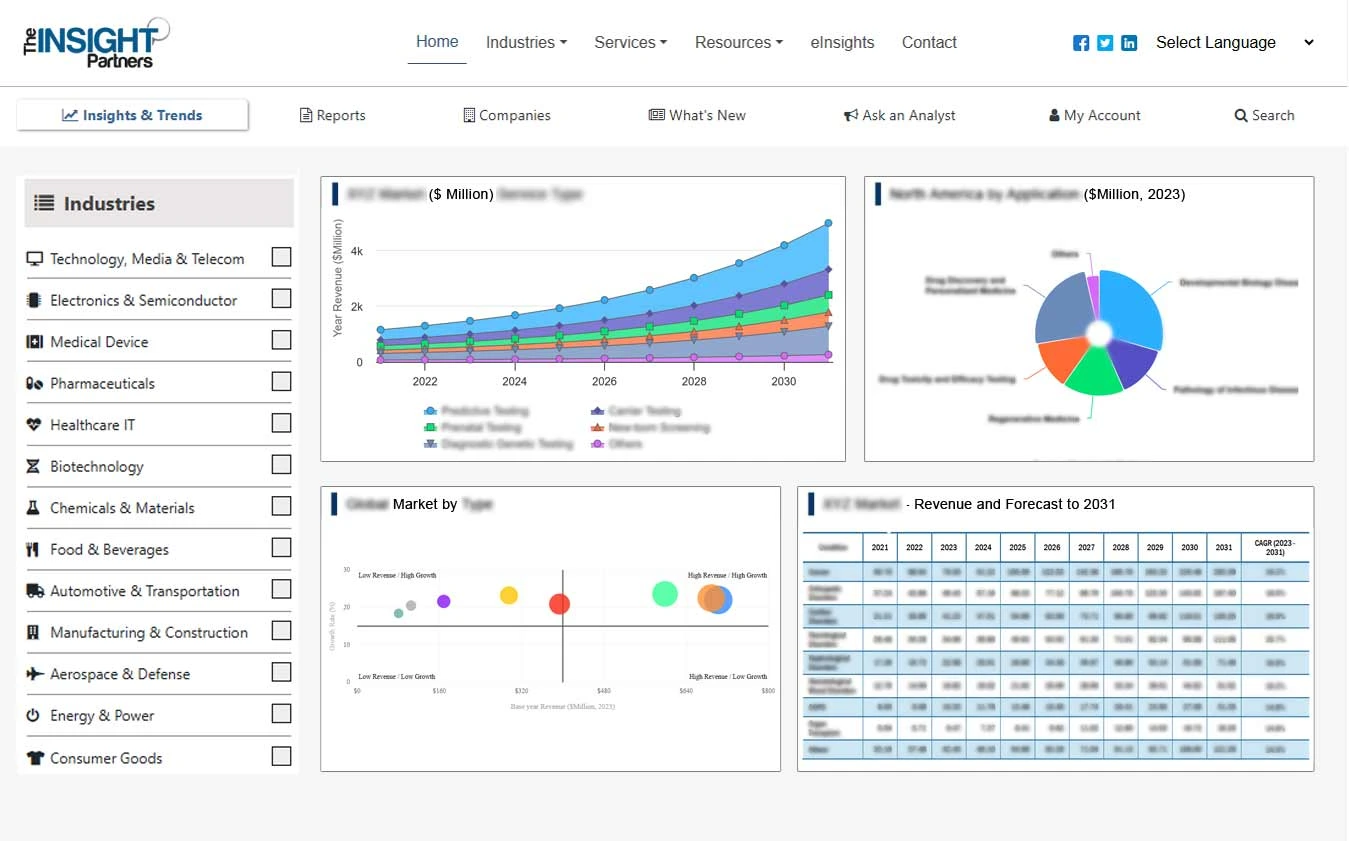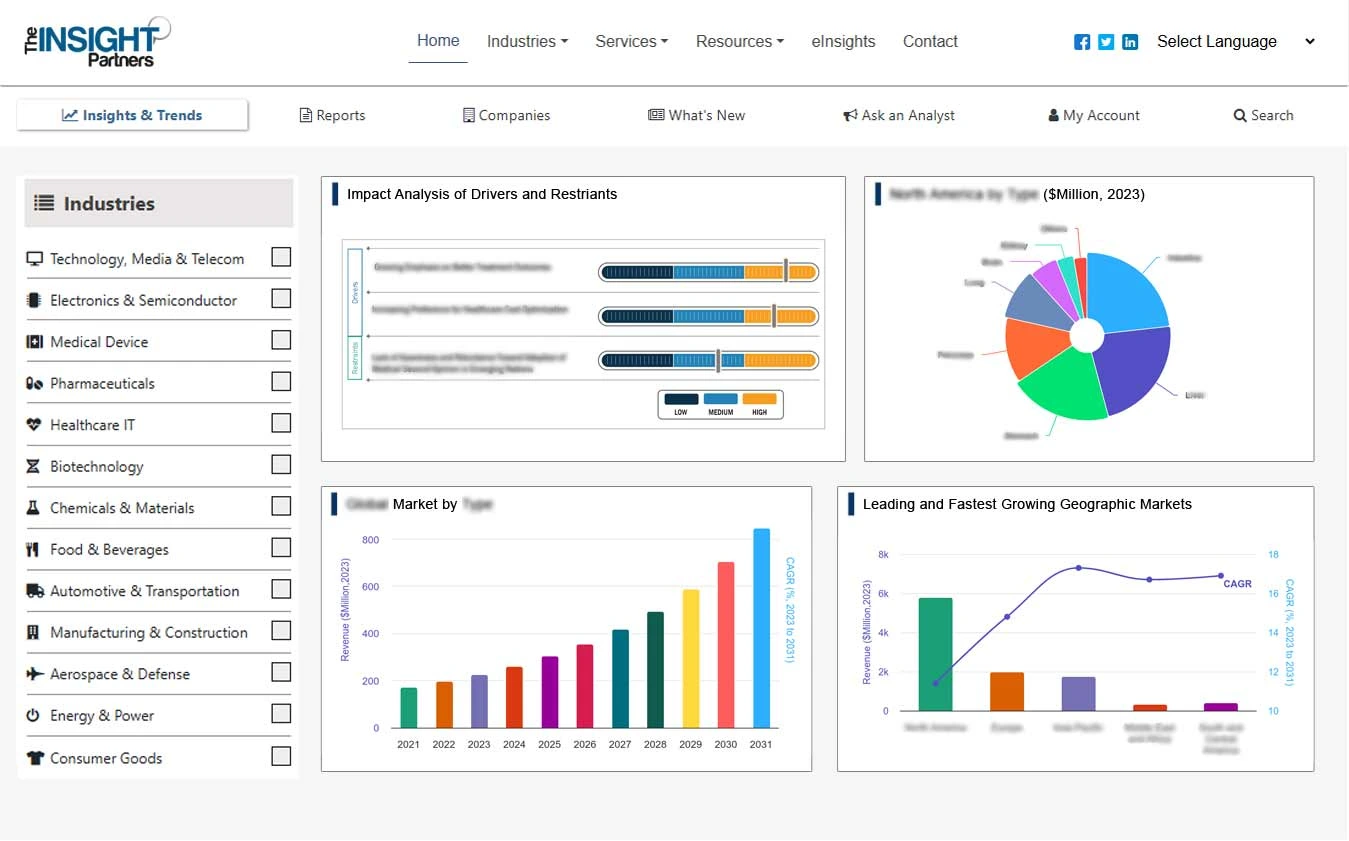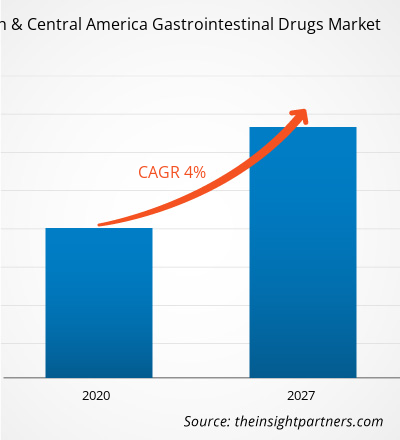The South and Central America gastrointestinal drugs market is expected to reach US$ 5,632.72 million by 2027 from US$ 4,160.28 million in 2019; it is estimated to grow at a CAGR of 4.0% from 2020 to 2027.
Rising prevalence of gastrointestinal (GI) diseases, and increase in development of biologics are the key factors driving the growth of gastrointestinal drugs. However, side effects associated with the drugs is the major factor hindering the South & Central America Gastrointestinal Drugs market
Gastrointestinal (GI) disorders are the medical conditions related to the digestive system that affect the colon, small and large intestine, and rectum. The disorders include constipation, irritable bowel, ulcerative colitis, and peptic ulcer diseases. These disorders are characterized by various symptoms such as pain, bloating, diarrhoea, nausea, and vomiting. These disorders constitute a large proportion of outpatients and frequent hospital visits. A wide range of GI drugs is commercially available in the market for the treatment of various conditions. Additionally, rising investments in the development of biologics and the emergence of a biosimilar are expected to drive the growth of the market in the forecast period.
Gastrointestinal diseases are the conditions that occur in the gastrointestinal tract. Common digestive problems include heartburn, inflammatory bowel diseases (IBD), inflammatory bowel syndrome (IBS), constipation, and diarrhoea. GI diseases account for substantial health care utilization and spending. Growing prevalence of IBD can be ascribed to poor nutritional choices, including a high intake of ultra-processed foods and trans-fats. Several studies have highlighted the accelerated growth of gastrointestinal diseases in South America’s populations during the past two decades. Both incidence and prevalence rates have shown a notable rise, with scientists pointing out that GI diseases are increasingly the cause of morbidity and mortality in American countries. For instance, the most frequently reported diseases in Brazil are gastritis, followed by GERD, hemorrhoids, irritable-bowel syndrome.
Gastrointestinal (GI) diseases, in particular, are becoming common and have been linked to changing environmental factors brought on by improved sanitation, industrialization, changes in diet, and the increased use of antibiotics. Due to these factors, medical device companies in the GI space have been expanding their business operations in South America. The incidence and prevalence of many GI disorders are highest amongst the very young and the elderly. As the population ages, the disease burden is expected to grow. The incidence and prevalence of IBD have increased in the last few decades. Moreover, in the last few years, the cases of IBD have increased. IBD is a chronic inflammation of the digestive tract and is of two types: Ulcerative colitis and Crohn's disease. Thus, the factors mentioned above are driving the adoption of GI drugs during the forecast period.
South and Central America is hit by the COVID-19 pandemic and thus has profound humanitarian, economic, and political consequences. They have responded to the situation by closing borders, ordering quarantines, and imposing a host of restrictions to keep people confined at home. For instance, Brazilian Health Regulatory Agency (ANVISA) has approved RedHill Biopharma Ltd. to conduct clinical trials for its drug for COVID 19. RedHill Biopharma Ltd.is a specialty biopharmaceutical company focusing on gastrointestinal diseases. RedHill is expected to promote the gastrointestinal drugs, Movantik for opioid-induced constipation in adults. Thus, the gastrointestinal drug market is expected to grow in the forecasted period.
Rest of South and Central America Gastrointestinal drugs Market, Revenue and Forecast to 2027 (US$ Mn)

- This FREE sample will include data analysis, ranging from market trends to estimates and forecasts.
SOUTH AND CENTRAL AMERICA GASTROINTESTINAL DRUGS MARKET SEGMENTATION
By Drug Class
- Acid Neutralizers
- Antidiarrheal and Laxatives
- Anti-Inflammatory Drugs
- Antiemetic and Antinauseants
- Biologics
- Others
By Route of Administration
- Oral
- Parenteral
By Application
- Inflammatory Ulcerative Colitis
- Crohn's Disease
- Irritable Bowel Syndrome
- Gastroenteritis
- Celiac Disease
- Others
By Distribution Channel
- Retail Pharmacies
- Hospital Pharmacies
- Online Pharmacies
By Country
- Brazil
- Argentina
- Rest of South and Central America
Company Profiles
- Celltrion Healthcare Co.,Ltd
- GlaxoSmithKline plc
- Johnson and Johnson Services, Inc.
- AstraZeneca
- Takeda Pharmaceutical Company Limited
South & Central America Gastrointestinal Drugs Report Scope
| Report Attribute | Details |
|---|---|
| Market size in 2019 | US$ 4,160.28 Million |
| Market Size by 2027 | US$ 5,632.72 Million |
| Global CAGR (2020 - 2027) | 4.0% |
| Historical Data | 2017-2018 |
| Forecast period | 2020-2027 |
| Segments Covered |
By Drug Class
|
| Regions and Countries Covered | South and Central America
|
| Market leaders and key company profiles |
- Historical Analysis (2 Years), Base Year, Forecast (7 Years) with CAGR
- PEST and SWOT Analysis
- Market Size Value / Volume - Global, Regional, Country
- Industry and Competitive Landscape
- Excel Dataset



Report Coverage
Revenue forecast, Company Analysis, Industry landscape, Growth factors, and Trends

Segment Covered
Drug Class, Route of Administration, Application, and Distribution Channel, and Country

Regional Scope
North America, Europe, Asia Pacific, Middle East & Africa, South & Central America

Country Scope
Brazil, Argentina
Trends and growth analysis reports related to Life Sciences : READ MORE..
- Celltrion Healthcare Co.,Ltd
- GlaxoSmithKline plc
- Johnson and Johnson Services, Inc.
- AstraZeneca
- Takeda Pharmaceutical Company Limited

 Get Free Sample For
Get Free Sample For